Table of Contents
Stakeholders
-
Technology is an essential component of learning today. With digital applications, tools and resources, students can create content, interact with experts, collaborate with peers and participate in simulation activities. Personalized experiences put students at the center of learning and empowers students to take control of their own learning through flexibility and choice. With this transformation to digital learning, it is important for stakeholders share the importance of moving towards digital learning with constituents, as well as address some of the concerns that occur during the transformation. This section provides communication toolkits for a variety of stakeholders. We encourage states and districts to share these toolkits widely. Each toolkit includes a 3-5 page narrative, a powerpoint presentation, and a communications packet.
- Business Community
- CIO
- Librarians
- Parents
- Principals
- School Board
- Students Superintendents
- Teacher Prep
- Teachers
-
Business Community
As schools move towards digital learning environments, it is necessary to foster business and community relationship to advance the transition. Current business and workforce requirements require the use of technology tools and resources from clerks to mechanics to artist to engineers to physicians – all professions are expected to understand and implement technology tools and resources. Districts and schools can partner with businesses and the community to ensure that students are acquiring the necessary workforce skills and that they are prepared for college and a career.
As schools move towards digital learning environments, it is necessary to foster leadership beyond district and school leaders to support the transition. Business and community leaders can provide industry expertise, as well as articulate the needs of the community—students that are career ready and responsible digital citizens. For example, in Cache County, Utah, there is a high demand for robotics technicians. Local businesses approached the school district to establish a robotics class because they needed employees that could repair and program the robots on a day-to-day basis. After the initial meeting industry leaders met with all of the surrounding school districts to discuss the robotics program. The school districts worked together to develop the Robots STEM Academy and created degree opportunities for students. The Robotics STEM Academy leverages UETN gigabit broadband connection, to access UETN’s collaborative distance education technology, and provides face-to-face instruction. Students learn about drone technology, build their own small robots, and program the large industrial robots via eight different locations that connect through the Bridgerland Applied Technology Center. This example highlights how collaboration can result in better preparing students with the skills necessary for the workforce. As a local business owner, how can I work with local schools to help ensure that high school graduates have the workforce skills necessary for our industry?
As a local business owner, how can I work with local schools to help ensure that high school graduates have the workforce skills necessary for our industry?
Business and community leaders should work with local school boards and district leaders to develop strong relationships to ensure that all stakeholders are vested in successful schools. Through strategic engagement, business and community leaders can generate public and parental support for student learning in the digital age, as well as college and career readiness. In Richland District Two, South Carolina is committed to ensuring that technology is available to all students outside of the classroom. Most students have their own devices through BYOD or laptop loans from the school, but not all students have internet access at home. The district used mapping data to determine which families lacked home internet access. Richland Two partnered with a local internet provider to offer internet hot spot devices to families with filtered internet broadband. When providing the devices to the family, the district explained that it was not only for students to complete homework, but also for the entire household to use to access community resources. I’m interested in partnership with a local school. What types of community partnerships are available?
I’m interested in partnership with a local school. What types of community partnerships are available?
The “homework gap” – the gap between students whose internet connections at home are slow or non-existent—and those who have home connections with adequate speed is an increasingly important issue. As schools implement digital learning and teachers require students to have internet access outside of school, the digital divide is increasing. The Aspen Institute blog post cites that as many as 7 in 10 teachers assign homework that requires access to the internet. Currently, one in three households do not subscribe to broadband service and 52% of low and moderate-income families report that internet access is too slow. This problem is disproportionately common in rural and underserved communities. As a local business, how can I work with the district/school to encourage students to patron on our business to access free wireless for homework assignments?
As a local business, how can I work with the district/school to encourage students to patron on our business to access free wireless for homework assignments? -
CIOs
The CIOs/CTOs role is not just about making sure the devices are working and educators are connected to the internet. CIOs/CTOs play an essential role in strategic planning and vision setting; understanding teacher and student needs for instructional materials and devices; determining internet and wireless access points; identifying key systems for data collection and assessment; and budgeting for technology. CIOs/CTOs must be included in the planning and discussions regarding adoption and implementation of instructional materials and online tools and services, in addition to plans for maintaining and expanding broadband access. CoSN’s Framework of Essential Skills of the K-12 CTO offers CIOs/CTOs a practical model for ensuring that they have the appropriate skills to support learning in the digital age. The framework identifies 10 essential skills and is organized around three professional categories:- Leadership and vision
- Understanding the educational environment
- Managing technology and support resources
- Chief Education Officer / Superintendent
- Chief Academic Officer / Instructional Leaders
- Instructional Materials Leader
- Assessment and Data Leader
- Digital Learning Leader
- Chief Financial Officer or other Business Leader
- Special Education Leader
- Title I/II/III Leaders
- CTE Leaders
- Professional Learning Leader
- Will our content delivery system/learning management system support your goals?
- Will our school/district have the technology capacity to deliver content efficiently and effectively?
- Is the broadband infrastructure sufficient for robust simultaneous access for most users?
- Do students have ubiquitous device access in school?
- Do students and teachers have ubiquitous device access out of school?
- Is Wi-Fi available on campus in all learning spaces?
-
Librarians
As schools move towards digital learning environments, it is necessary to foster leadership beyond district and school leaders to support the transition. School librarians play an important leadership role in modernizing educational settings–both at school and in the community. In the digital age, libraries offer a space for students to create content and collaborate, as well as provide access to the internet and digital resources. Beyond digital citizenship, school librarians teach students information literacy skills and the use of digital tools and applications. As school leaders in literacy and technology, school librarians collaborate with classroom teachers and fellow educators to instruct every student in the school community. School librarians support the development of digital learning, participatory learning, inquiry learning, and information and technology literacies with digital and print materials, including curation of openly licensed educational resources. -
Parents
As schools move towards digital learning environments, it is necessary to foster parental support to advance the transition. District and school leaders need to educate parents on the benefits of digital learning to support personalized student learning, while addressing some of the parental concerns around digital citizenship, data privacy and security and the homework gap. National parent organizations may want to share this toolkit with members to explain the importance of moving towards digital learning and addressing some of the parental concerns as a district or school implements digital learning. Some of the key areas of concern that parents/care providers might express about learning in the digital age include the use of digital instructional materials, digital citizenship, student data privacy and security and the homework gap.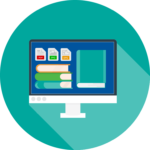 I don’t know what online resources to choose to help my children with homework. When I search the internet, there are so many choices.
I don’t know what online resources to choose to help my children with homework. When I search the internet, there are so many choices.
Students can learn how to use technology through a positive school culture that supports the safe and responsible use of digital tools and resources. Teachers, librarians and counselors are a good resource for students to learn about digital citizenship and how to navigate issues of cyberbullying, internet safety, digital footprint and other digital concerns. How do I know that my child knows how to use the internet and digital resources responsibly? What resources are available for parents?
How do I know that my child knows how to use the internet and digital resources responsibly? What resources are available for parents? My child requires access to the internet outside of school. Our internet is slow and unreliable. What can we do?
My child requires access to the internet outside of school. Our internet is slow and unreliable. What can we do?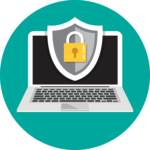 I am worried about who has access to my child’s information and how it might be used. What measures are in place to ensure information is protected?
I am worried about who has access to my child’s information and how it might be used. What measures are in place to ensure information is protected?Good Digital Parenting
In this short video by the Family Online Safety Institute, teens help parents to understand, discuss and encourage the use online privacy settings for their children.Resources
-
Principals
As schools move towards digital learning environments, it is necessary to foster leadership at the school level to support the transition. Principals play an important leadership role not just in modernizing educational settings, but in re-imagining the use of space and school time to provide students a consistently personalized, technology-rich learning experience. Principals are uniquely positioned at the intersection of education practice and policy to advance that transformation. Working with local and regional school boards, superintendents, teachers, students and community members is essential to the effective implementation of digital learning in schools. Specifically, principals interact with the superintendent and school board to understand policies and practices, as well as new initiatives within the district. Principals are often the face of the school in the community – working with local businesses and libraries and other community organizations on a variety of issues. And, most important for promoting a vision of student empowerment, principals lead and provide professional learning opportunities to teachers to support their instruction, development their leadership and—ultimately–advance student learning. Some of the key areas of concern that principals might encounter as they implement digital learning in their school include professional learning and community partnerships.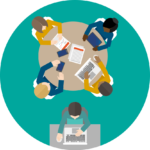
How can digital tools support my teachers in acquiring professional learning opportunities?
 How can principals educate the community on learning in the digital age? How can principals create partnerships with the community to support academic and extracurricular activities?
How can principals educate the community on learning in the digital age? How can principals create partnerships with the community to support academic and extracurricular activities?Impact of the Principal on School Culture and Climate
This video presents interviews of teachers from Caldwell Early College High School about the impact of the principal on the climate and culture of a school.Resources
-
Students
Effective digital learning environments are dependent upon successful student learning and achievement. Students and student organizations play an important role in the transition to digital learning. Speak Up 2016 reports that students are using mobile devices for a variety of teacher-directed and student directed activities. Survey data shows that 81% of students are doing internet research with their mobile device and 39% report taking notes on their device. Many students see technology as a gateway to personalizing and self-blending learning around areas of interest that are academic or for career preparation purposes.
Effective digital citizenship helps create a positive school culture that supports the safe and responsible use of digital tools and resources. Students can learn how to use technology safely and responsibly from their parents, teachers and librarians. Families and schools are also a good resource for students to learn how to navigate issues of cyberbullying, internet safety, data privacy, digital footprint and other digital concerns. As a student, how can I learn more about my digital footprint?
As a student, how can I learn more about my digital footprint?
The “homework gap” – the gap between students whose internet connections at home are slow or non-existent—and those who have out of school connections with consistent, adequate speed access to conduct school based activities in a safe environment is an increasingly important issue. As schools implement digital learning and teachers require students to have internet access outside of school, the digital divide is increasing. According to Project Tomorrow’s Speak Up Research Project (2016),17% of students in grades 6-12 say that they sometimes cannot do homework due to the lack of connectivity outside of school. This problem is disproportionately common in rural and underserved communities. Some districts have actively partnered with internet providers in their communities to offer discounted service fees, others issue hot spots that students can take home, while others have adjusted school library hours to offer more access. Public libraries are another option for helping to address the “homework gap”. Many libraries offer access to free wireless internet, computers and devices, and digital resources. The FCC’s Lifeline program is another option for low-income families to acquire discounted broadband service at home. My teacher assigns homework that requires access to the internet. How can I access the internet outside of my home?
My teacher assigns homework that requires access to the internet. How can I access the internet outside of my home? -
School Board
As schools move towards digital learning environments, it is necessary to foster support beyond district and school leaders to advance the transition. Local school board members, and those serving on the boards of education service agencies or on their state school boards association’s board of directors, play an important leadership role in modernizing educational settings. The local school board, whether elected or appointed, is the link between the school district and the community. The primary mission of the school board is to support student achievement. The National School Boards Association (NSBA) identifies the Key Work of School Boards necessary to ensure that all students achieve at high levels. These five core areas of responsibility for effective governance are: vision, accountability, policy, community leadership, and board/superintendent relationships. The following principles of collaborative leadership and community partnerships identify ways that school board members can connect policies and practices to support the movement towards digital learning. Although, the current state of digital innovation in schools varies widely across the country, these principles are based on the belief that all students have access to the digital tools and resources necessary to be prepared for college and/or career. I am worried about who has access to my child’s information and how it might be used. What measures are in place to ensure that information is protected?
I am worried about who has access to my child’s information and how it might be used. What measures are in place to ensure that information is protected? How can school members support district and school leaders in the transition to digital learning?
How can school members support district and school leaders in the transition to digital learning? What steps can board members take to engage the community and create awareness around the benefits of learning in a digital environment?
What steps can board members take to engage the community and create awareness around the benefits of learning in a digital environment?School board members discuss the positive impacts of adopting college and career ready standards to better prepare students for the future.
Resources
-
Superintendents
As schools move towards digital learning environments, superintendents play a key role in developing a vision for student learning. Looking across district agencies, there are many leaders who are or should be involved in discussions and planning around digital learning, including the chief academic officer, chief technology officer, chief financial officer, instructional materials leader and special education leader. Initiating the planning process with a shared vision serves as a firm compass point for how technology will support teaching and learning goals. Unlike a consensus in which everyone agrees, developing a shared vision represents buy-in from all stakeholders and superintendents play a key role in making this happen–involving the right people at the right time.
The relationship between the superintendent and the school board is an essential component for success, especially when implementing new initiatives. The National School Boards Association guide, On the Same Page 2.0 is intended to spark conversation and suggestions among stakeholders and emphasizes the importance of information flow for continuous improvement and ownership by all stakeholders. As seen in the graphic, there is a feedback loop between stakeholders—from the board of education to students and parents. In addition, AASA, the Association for School Superintendents hosts the Digital Learning Consortium, to help school district leaders gain insight into emerging and successful models of best practices using digital media in support of engaging and effective learning experiences. The NETP 2017 identifies the key components of collaborative leadership: As a superintendent, how can I work with my local school board and collaborate with my peers to implement digital learning?
As a superintendent, how can I work with my local school board and collaborate with my peers to implement digital learning?- Develop a shared vision for how technology can support learning
- Seek input from a diverse team of stakeholders to adopt and communicate clear goals for teaching, leading, and learning that are facilitated by technology
- Communicate with all stakeholders by using appropriate media and technology tools and establish effective feedback loops
- Ensure that practitioners at the school and district level use and understand research
Many states and districts are utilizing Total Cost of Ownership (TCO), a financial estimate that includes metrics and processes to determine the total cost of acquiring and maintaining devices and instructional materials. Shifting to digital learning requires critical consideration regarding both access to the instructional materials and maintaining the technology tools and services to support the devices and content. For districts that engage in transformative budgeting, a model that accomplishes innovation within existing budgets, leaders across agencies, such as the chief academic officer, the chief innovation officer, the chief information officer and the chief financial officer need to be part of the conversation. The following three essential strategies characterize transformative budgeting when applied to technology readiness for digital learning: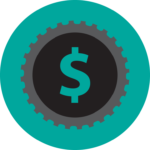 How are we going to pay for high-speed broadband, wireless access and devices?
How are we going to pay for high-speed broadband, wireless access and devices?- Alignment of technology expenditures with the goals in the district’s strategic plans.
- A cross-functional budget leadership team that brings together finance, technology, curriculum and instruction.
- Transformative zero-based budgeting – a process through which education leaders begin each budget cycle at zero in each category, and then add costs to the budget only when there is evidence that such costs are required to meet goals.
-
Teachers
Teachers are the linchpin to implementing effective learning environments. Many teacher leaders have embraced technology tools and resources in the classroom similar to how they have adopted these tools in their personal lives and professional learning opportunities. These teachers recognize that leveraging technology tools and resources is essential for all careers from clerks to mechanics to artists to engineers to physicians – all professions are expected to understand and implement technology tools and resources. As teachers transition to digital learning, there is a need to re-establish classroom routines, change lesson planning and student activities and shift expectations to best meet the needs of all students. What resources can help teachers implement digital learning in their classrooms?
What resources can help teachers implement digital learning in their classrooms? With so many digital instructional materials and resources on the internet, how do teachers select quality materials?
With so many digital instructional materials and resources on the internet, how do teachers select quality materials? How can teachers help ensure that students use digital tools safely and responsibly?
How can teachers help ensure that students use digital tools safely and responsibly?Reimagining Classrooms: Teachers as Learners and Students as Leaders
Kayla Delzer speaks about her mission to revitalize learning and the classroom environment. Kayla explains how to release the power in the classroom by giving students ownership of their learning and making it relevant to them.Resources
-
Teacher Prep
As schools move towards digital learning environments, it is necessary to ensure that preservice teachers gain the knowledge and skills required for teachers working in digital age classrooms. Through modeling of digital learning instruction, EPP faculty members play a significant role for achieving that goal. The Council for Accreditation of Educator Preparation (CAEP) in its Content and Pedagogical Standard states that “Providers ensure that candidates model and apply technology standards as they design, implement and assess learning experiences to engage students and improve learning; and enrich professional practice.” The National Association of State Boards of Education report, Born in Another Time, highlights the need for shifts in teacher preparation programs to support digital learning. Digital natives are not necessarily more likely to include the use of technology tools and resources in the classroom simply because they leverage them for personal use. Teachers that are best prepared for digital learning environments are immersed with digital tools and resources during their own educational experiences and understand the value of digital tools and resources for student learning.
Bridging the gap between teacher preparation programs and school systems is critical so that novice teachers are prepared for success in digital age classrooms. EPPs and school districts can support teacher preparation faculty by sharing innovative models for digital learning implementation to prepare preservice teachers for learning in the digital age. For example, the Substitution Augmentation Modification Redefinition (SAMR) model provides a method for how technology impacts teaching and learning. As teachers progress to the redefinition stage in the model, technology supports student centered learning through student generated discussions and collaboration. The Technological Pedagogical Content Knowledge (TPACK) framework addresses the interplay of three primary forms of knowledge–content, technological and pedagogical. Scholars argue that good teaching requires an understanding of how technology relates to the pedagogy and content. The Innovation Exchange (developed by the American Association of Colleges for Teacher Education) is a vehicle for EPPs to share their innovative approaches, new technologies, and transformative practices in educator preparation. The Innovation Exchange promotes interaction and collaboration within the professional community. As a faculty member of an EPP, how can we prepare preservice teachers for learning in the digital age?
As a faculty member of an EPP, how can we prepare preservice teachers for learning in the digital age?
The U.S Department of Education (ED) encourages Institutions of Higher Education (IHE) to shift to student-centered learning models supported by digital tools and resources for all disciplines. The recently published report, Reimagining the Role of Technology in Higher Education proposes a student-centered higher ed ecosystem—depicted in the accompanying graphic. If future educators in teacher preparation programs experience student-centered learning via digital tools they are more likely to integrate such practices in their classrooms. In addition, ED published the Advancing Educational Technology in Teacher Preparation: Policy Brief, which identifies key challenges and solutions to the effective integration of technology in teacher preparation, provides guiding principles on how to move the field toward effective integration of technology in teacher preparation programs, and identifies areas of opportunity and collaboration for stakeholders across the field.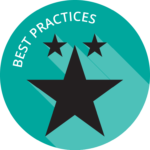 What are some of the best practices for EPP faculty and preservice teachers?
What are some of the best practices for EPP faculty and preservice teachers?

